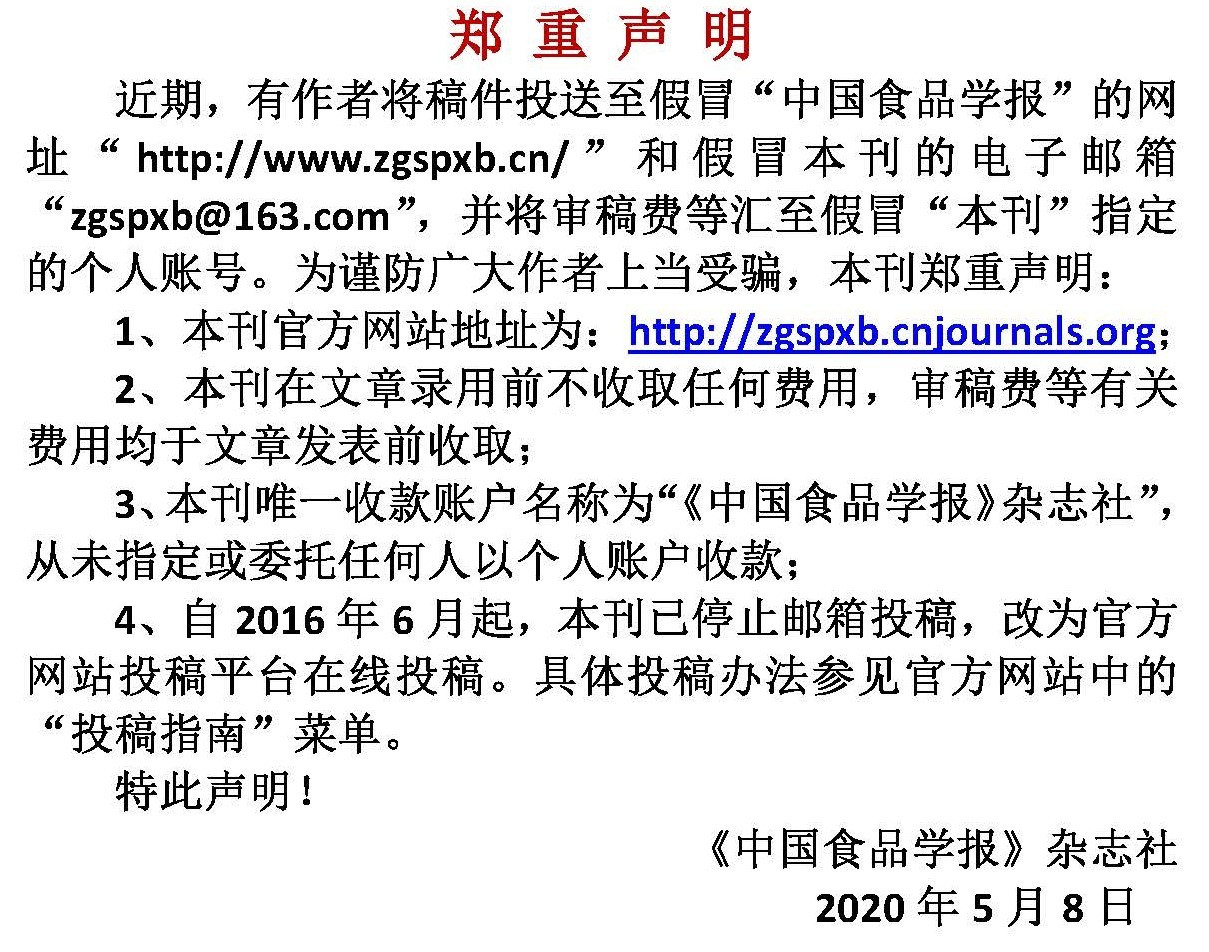纳米解冻对鱿鱼蛋白消化后氧化特性的影响
作者:
作者单位:
(渤海大学食品科学与工程学院 中国轻工业海水鱼加工重点实验室 辽宁锦州 121013)
作者简介:
通讯作者:
中图分类号:
基金项目:
国家自然科学基金青年科学基金项目(31901763)
Effects of Nanothawing on Oxidation Characteristics of Jumbo Squid (Dosidicus gigas)Protein after Digestion
Author:
Affiliation:
(College of Food Science and Engineering, Bohai University, China Light Industry Key Laboratoryof Marine Fish Processing, Jinzhou 121013, Liaoning)
Fund Project:
引用本文
朱文慧,李雯政,郭慧芳,步营,励建荣,李学鹏.纳米解冻对鱿鱼蛋白消化后氧化特性的影响[J].中国食品学报,2024,24(12):117-125
复制分享
文章指标
- 点击次数:
- 下载次数:
- HTML阅读次数:
历史
- 收稿日期:2023-12-20
- 最后修改日期:
- 录用日期:
- 在线发布日期: 2025-01-23
- 出版日期:
文章二维码

版权所有 :《中国食品学报》杂志社 京ICP备09084417号-4
地址 :北京市海淀区阜成路北三街8号9层 邮政编码 :100048
电话 :010-65223596 65265375 电子邮箱 :chinaspxb@vip.163.com
技术支持:北京勤云科技发展有限公司
地址 :北京市海淀区阜成路北三街8号9层 邮政编码 :100048
电话 :010-65223596 65265375 电子邮箱 :chinaspxb@vip.163.com
技术支持:北京勤云科技发展有限公司
